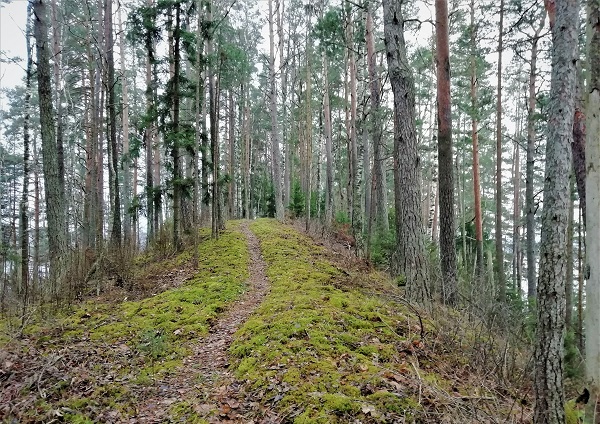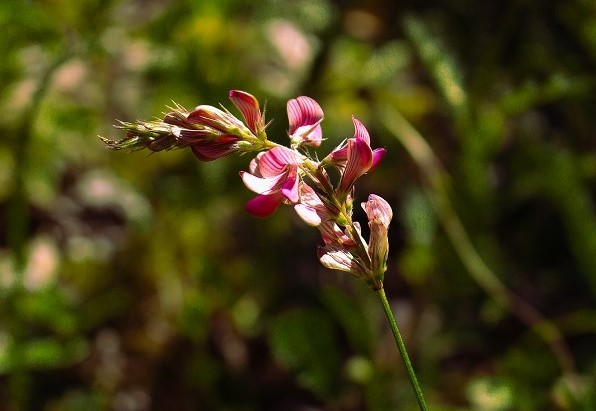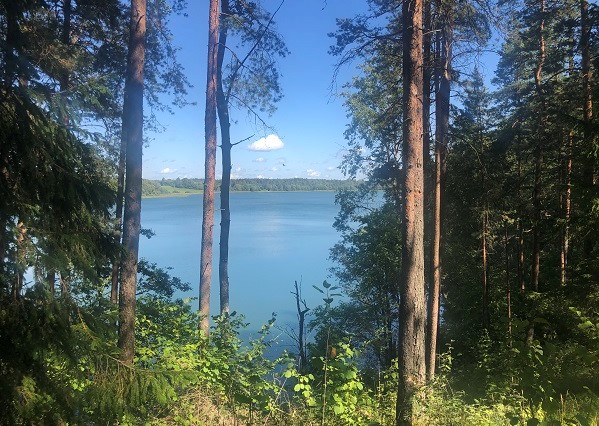LVM to Restore the Very Rare Conifer Forests on the Steep Slopes of Gravel and Sand Ridge Forests in the Grebļukalns Nature Reserve
This autumn, JSC “Latvia's State Forests” (LVM) will start large-scale biotechnical measures to improve the condition of the gravel and sand ridge forest habitat in Latvia and the living conditions for the habitats of the rare plant species characteristic of this habitat in the Grebļukalns nature reserve. At the beginning of August, a seminar was held in the areas of the planned works, where LVM explained the works to be performed and their importance.
The biotope of gravel and sand ridge forests is extremely rare in Latvia. It is a light and bright pine forest on steep slopes, which is home to rare and protected species. Coniferous forests on such landforms are a rare geomorphological value in Europe, formed 10-14 thousand years ago by the melting of the glacier. To exist in the long term, gravel and sand ridge forests require natural disturbances such as wind action, fire or regular disturbances in the ground cover that maintain open areas of sand and gravel. If these disturbances are missing, the forests gradually overgrow and the living conditions necessary for various plant and animal species disappear.
To improve the condition of the gravel and sand ridge biotope and find solutions for its future management, LVM has established a pilot territory of 10.2 hectares in the territory of the Grebuļkalns nature reserve. In this pilot area, LVM will improve the condition of the habitat and at the same time test various nature-friendly management methods of such a habitat. The knowledge gained about the most suitable and cost-effective methods can also be used in other areas where the rare gravel and sand ridge and other ecologically similar forests are to be found in Latvia and elsewhere.
In the course of the works, the pilot area will be cleared for hazels, which have grown thickly on the gravel and sand ridge forest slopes and make strong shade for the rare species of plants that need sun. In turn, in the further part of the Grebļukalnas walking trail in the nature reserve, which leads along the gravel and sand ridge forest grove, the pilot area will be cleared of spruce trees to achieve the predominance of pine trees characteristic of the habitat and restore sunlit areas.
Throughout the works, habitat-specific species such as Swedish junipers, some outdoor birches and oaks, as well as all biologically old trees, regardless of species, will be preserved. Part of the felling residue will be collected and transported for chip processing, while the other part will be collected in piles and burnt on site, thus simulating the action of a fire, to create exposed sand and gravel areas, where the rare species of plants that like sun, such as the Hungarian Sainfoin or Onobrychis arenaria, the Eastern pasqueflower or Pulsatilla patens and others, can sow and germinate.
Photo: The specially protected Hungarian Sainfoin, the habitat of which will be improved with targeted biotechnical measures
Such extensive restoration or biotechnical measures will be carried out in the Grebļukalns nature territory for the very first time – the territory has been a nature reserve since 1957 and, due to the absence of the necessary natural disturbances, the condition of the habitat has significantly deteriorated, thus rare species in Latvia that have no opportunity to move elsewhere have started to disappear. Habitat restoration works will be challenging, because the slopes are particularly steep, and the ridge trail is narrow. As much as possible, clearing the work areas from overgrowth and cutting down any unwanted trees will be done with machinery; in the further areas, the area will be cleared of smaller overgrowth with a saw or brushcutter.
In order for forest machines to be able to move along the Grebļukalnas ridge trail, thickly grown hazels in a length of three metres on each side of the trail will be cut down. This will not only clear the way for the machinery involved in the work, but also reveal a beautiful view of the lakes on both sides of the islands. Viewing areas or openings will be made in irregular shapes. This way, two effects will be achieved at the same time: providing light for rare species and creating openings for a beautiful and rare landscape in Latvia. There will be two such viewpoints along the trail.
In the photo: one of the places where a viewpoint to the lake will be built
“Sloping and steep slopes that need to be cleared of trees and the difficult conditions for moving machinery will be a challenge in planning and carrying out the work. We will use three types of logging machinery units in this area. A harvester with a rivet head will work in places where it can be reached from the road, medium-sized or so-called maintenance forestry equipment will work on slopes that are not too steep, but where medium-sized forestry equipment will not be able to pass the large, old pines on the narrow path, light or small forest machinery will work.
In places where the slope is less steep, we will be able to go down more safely from the top of the ridge, but there, where the slopes are steep, we will work more from below. Operators of forest machinery will have to perform careful work in accordance with all the environmental protection conditions,” says Dainis Babāns, Head of Forestry in the Northern Latgale Region of LVM.
The Grebļukalns nature reserve is the most complex area of biotechnical activities planned by LVM so far; previously, such measures have not been taken in Latvia in Grebļukalns or other gravel and sand ridge forests on steep slopes.
The methodical planning of the works was already started in 2020, when after visiting the reserve, LVM specialists mapped the biotopes of European Union importance in the territory and provided professional recommendations as part of the development of the nature protection plan. Based on what was done previously, a set of measures was planned, and methods were developed to implement the works in nature.
All natural values will be marked so that they are protected during the works. It is expected that the works will take place until the end of 2025. During the work, the walking path will be closed to visitors for safety reasons.
Representatives of LVM, SIA “Rīgas meži”, the State Forest Service, municipalities of Ludza region, State Border Guard and local residents took part in the stakeholder information seminar held on 4 August.
The works in the Grebuļkans nature reserve will be carried out by LVM within the framework of the LIFE-IP LatViaNature project. During this project, in a total area of more than 100 hectares, LVM will carry out habitat restoration works in two more specially protected Natura 2000 areas, in the “Lake Engure” nature park and in the “Ziemeļgauja” protected landscape area, as well as in the inland dunes of Zvirgzde. All these areas are notable for the presence of European rare and protected geologically determined forest habitats that are dependent on natural disturbances: wooded coastal dunes, lichen-rich pine forests, coniferous forests on gravel and sand ridge landforms, as well as old and natural boreal forests in dry growing conditions, part of the areas are important habitats for hunters.







